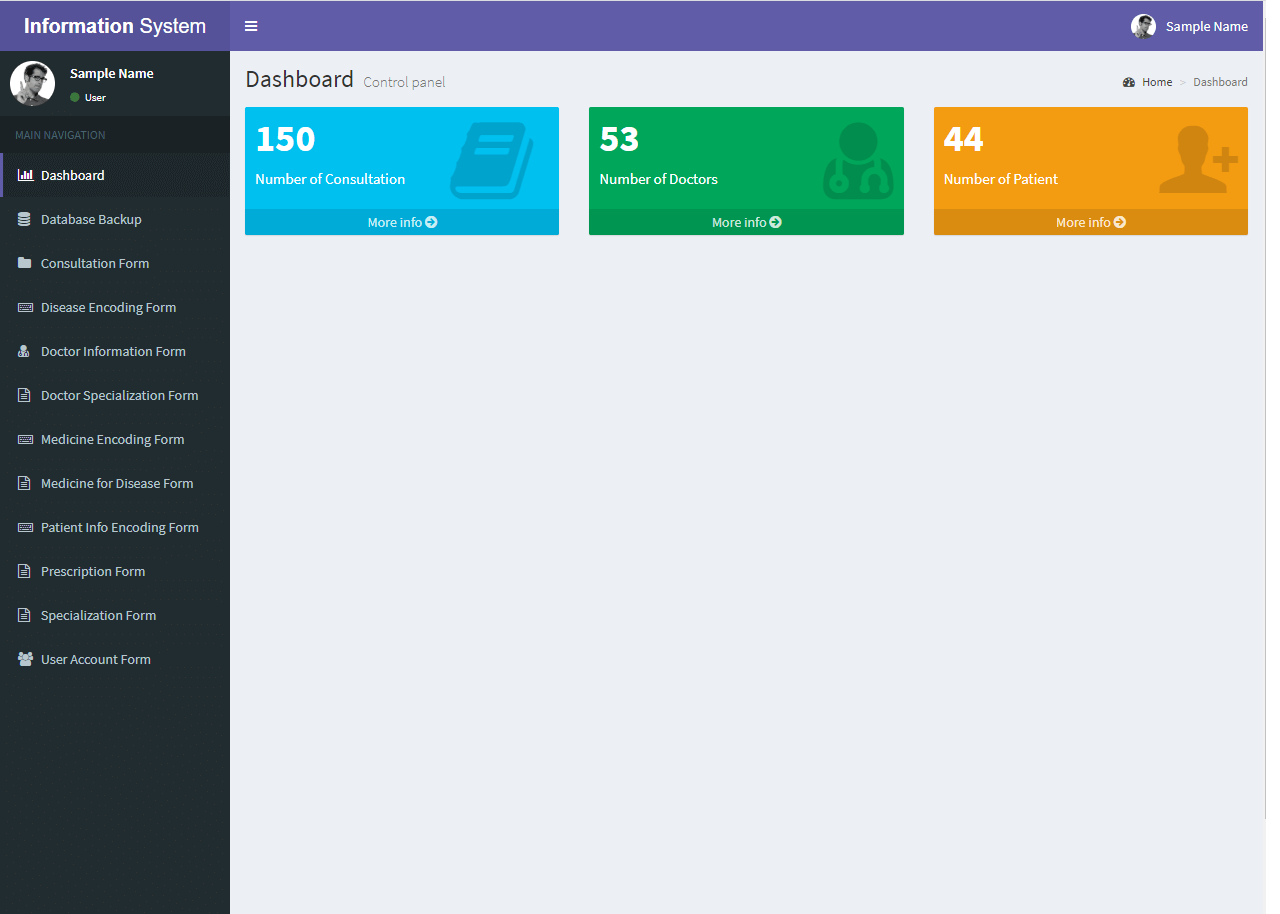AI Chatbot for Health Queries
Introduction to Health Chatbots
Table of Contents
AI chatbots are revolutionizing healthcare by providing quick, accessible, and often personalized support for patients seeking information about their health. These digital assistants are powered by artificial intelligence and natural language processing (NLP), enabling them to understand and respond to health-related questions in real-time. Health chatbots can answer basic medical queries, offer guidance on symptoms, and assist patients with finding information on various health conditions. This accessibility transforms how patients engage with healthcare, making it easier to get initial insights without the need to immediately visit a doctor or clinic.
Health chatbots improve patient engagement by giving users an accessible, on-demand resource for their health concerns. For individuals living in remote areas or those with mobility limitations, these chatbots offer a valuable, immediate point of contact. They help answer questions that might otherwise go unasked, providing guidance or reassurance that can lead to more proactive health management. Additionally, chatbots relieve pressure on healthcare facilities by reducing non-urgent inquiries, allowing doctors to focus more on critical cases. Overall, these AI-driven tools increase accessibility to health information, empowering users to make informed decisions about their well-being.
Why Use AI for Health-Related Queries?
Benefits of AI Chatbots in Addressing Common Health Concerns
AI chatbots in healthcare can provide quick answers to common health-related questions, making it easier for people to get the information they need. Whether someone is concerned about cold symptoms, minor injuries, or general health advice, chatbots offer immediate guidance and education. They also offer a safe space for users to ask sensitive or private questions without the worry of judgment. This instant support not only helps individuals manage everyday health concerns but can also help reduce unnecessary anxiety.
Improving Accessibility and Reliability of Preliminary Health Guidance
For many people, especially those in remote or underserved areas, accessing medical advice can be a challenge. AI-powered health chatbots help bridge this gap by offering reliable preliminary guidance, no matter the time or location. These chatbots are available 24/7, providing support when healthcare facilities might not be open. Built with reliable medical information, they give users preliminary guidance on their symptoms and possible next steps, which is especially valuable for those needing quick advice or those uncertain about seeking professional care.
Reducing Strain on Healthcare Systems for Minor Queries
With growing demands on healthcare providers, minor inquiries can overwhelm doctors and hospitals. AI chatbots help manage this by handling common, non-urgent queries, freeing up resources and allowing healthcare professionals to focus on patients with critical needs. By offering immediate assistance for minor issues, chatbots reduce wait times and enhance the overall efficiency of healthcare systems, contributing to a more balanced and effective approach to patient care.
Streamlining Faculty Workload Management through Digital Document Processing
Key Technologies for Building a Health Chatbot
Overview of Tools and Frameworks
Building a reliable health chatbot requires the integration of several technologies, each contributing unique capabilities to support effective, user-friendly health guidance. Here’s a look at the main tools and frameworks:
- Rasa: Building Conversational AI
Rasa is a powerful open-source framework for creating AI-driven chatbots with a strong focus on conversational experiences. In a health chatbot, Rasa enables developers to design complex, interactive dialogues that help users feel heard and understood. With Rasa, you can customize conversation flows to manage user queries, guide users through symptom checkers, and provide accurate responses based on the context of each conversation. Rasa’s flexibility also supports multilingual functionality, making it easier to reach a diverse user base.
- Dialogflow: Natural Language Understanding
Dialogflow, powered by Google, specializes in natural language understanding (NLU), which is essential for interpreting a user’s questions or statements. When integrated into a health chatbot, Dialogflow interprets natural language input, identifies user intent, and extracts key information (like symptoms or conditions) needed to formulate a helpful response. This tool helps make interactions feel more natural and intuitive by recognizing context and maintaining meaningful conversations, even with complex health-related questions.
- Python (TensorFlow/PyTorch): Machine Learning Models for Symptom Analysis
Python, along with machine learning libraries like TensorFlow and PyTorch, is central to a chatbot’s ability to analyze symptoms and provide preliminary health advice. By training machine learning models on health-related datasets, developers can equip the chatbot to recognize patterns in symptoms and generate accurate responses. This helps users get a sense of whether their symptoms might be related to a specific condition, encouraging proactive steps toward professional healthcare if necessary. Python’s flexibility with TensorFlow and PyTorch allows for easy integration with other technologies in the chatbot’s ecosystem.
- Firebase and MongoDB: Database Options for Secure Data Storage
For storing and managing user data securely, Firebase and MongoDB are popular choices. Firebase offers a real-time database with built-in security features, making it ideal for applications that need to manage quick data updates and provide secure storage for user interactions. MongoDB, a NoSQL database, excels in handling unstructured data, such as chatbot conversation logs. Both databases ensure that user data is securely stored, which is essential when dealing with sensitive health-related information, helping the chatbot meet privacy requirements.
Essential Features of a Health Query Chatbot
To create a health chatbot that effectively supports users, it’s essential to include certain core features that make it a useful, reliable, and secure tool for health-related queries.
Symptom Checker Functionality
One of the most valuable features of a health chatbot is its ability to serve as a symptom checker. This feature allows users to input symptoms, which the chatbot then analyzes using AI-driven models to suggest possible conditions or next steps. By asking users follow-up questions about their symptoms, the chatbot can refine its understanding and provide more accurate guidance. The symptom checker offers a preliminary health assessment that can help users decide if they need to seek medical attention or manage their symptoms at home.
Condition and Disease Information
In addition to checking symptoms, a health chatbot should provide comprehensive information about common conditions and diseases. This feature enables users to look up detailed explanations about conditions, symptoms, treatments, and preventative measures directly through the chatbot. With reliable, up-to-date health information, users can gain a clearer understanding of various health topics without needing to search multiple sources. This feature not only educates users but also reduces anxiety by providing trusted information right away.
Appointment Scheduling (Optional)
An optional but valuable feature for a health chatbot is appointment scheduling. For users who may need to see a healthcare provider, the chatbot can streamline the process by allowing them to book appointments directly from the chat interface. By integrating with a healthcare provider’s scheduling system, the chatbot can check available appointment slots, help users book an appointment, or provide contact information for nearby healthcare facilities. This feature enhances the chatbot’s usability by moving beyond basic information to offering a practical next step in a patient’s care journey.
Privacy and Data Security Considerations
Privacy and data security are critical in any health application, and a health chatbot is no exception. Since users may share sensitive health information, the chatbot must comply with privacy regulations like HIPAA (in the U.S.) or GDPR (in the EU) to protect user data. It should ensure secure data transmission and storage, implementing encryption and access controls to prevent unauthorized access. Transparent privacy policies and secure data handling build user trust, ensuring they feel comfortable sharing health concerns with the chatbot.
Implementing the AI Model for Health Guidance
Creating a health chatbot that can effectively understand and respond to patient questions relies heavily on training an AI model to recognize health-related language patterns and symptoms. Implementing an AI model for health guidance requires careful attention to data selection, natural language processing (NLP), and machine learning tools like TensorFlow or PyTorch to achieve accuracy and reliability.
Training Datasets: Selecting Health-Related Data Sources for Training
The foundation of any AI health chatbot is a robust, well-curated training dataset. Selecting appropriate health-related data sources is crucial for training the chatbot to understand and respond accurately to medical queries. These datasets may include symptom and diagnosis data, health Q&A sources, and even publicly available medical research or encyclopedic health resources. High-quality, diverse data ensures the model learns to recognize a broad range of medical terms and common symptom patterns, enabling it to handle various health-related questions.
Incorporating NLP to Understand and Interpret Patient Questions
Natural language processing (NLP) is essential for a health chatbot to interpret and respond to user questions accurately. By integrating NLP, the chatbot can analyze the language patterns of patient questions, identifying keywords, symptoms, and intent. NLP techniques like entity recognition help the chatbot understand specific symptoms or conditions mentioned by users. NLP also helps the model account for conversational nuances and varied phrasing, which improves the chatbot’s ability to deliver responses that feel natural and helpful, even if users phrase similar questions in different ways.
Tailoring Responses with TensorFlow or PyTorch for Accurate Symptom Analysis
To accurately analyze symptoms and provide personalized guidance, machine learning libraries like TensorFlow and PyTorch are valuable tools. With these frameworks, developers can fine-tune machine learning models to recognize complex patterns in user data and make educated guesses about potential health issues based on symptoms. TensorFlow and PyTorch allow for efficient training and model optimization, enabling the chatbot to provide tailored responses. Over time, this continuous training improves the model’s accuracy in symptom analysis, resulting in more relevant, precise, and user-specific guidance.
Leveraging Firebase and MongoDB for Data Management
Data management is essential to building a reliable health chatbot, especially when handling sensitive health information. Leveraging Firebase and MongoDB ensures that the chatbot can manage real-time data interactions while securely storing user information and chat history. Here’s how each of these technologies supports effective data management for a health query chatbot.
Securing Sensitive Health Data
When dealing with health-related queries, ensuring the privacy and security of user data is critical. Both Firebase and MongoDB come equipped with security measures such as encryption, access control, and authentication protocols. These tools help protect user information, ensuring compliance with data privacy regulations like HIPAA (for U.S. users) and GDPR (for EU users). In Firebase, the authentication feature provides secure user login and identity management, while MongoDB supports secure data handling with encrypted databases, helping to protect sensitive health data from unauthorized access.
Using Firebase for Real-Time Interaction and Seamless User Experience
Firebase is an ideal choice for supporting real-time features within a health chatbot. With Firebase, user interactions are immediately updated across devices, creating a seamless chat experience where users receive instant responses. This real-time capability makes it easier for the chatbot to provide timely feedback on health-related queries, which is especially important when users are seeking quick guidance. Firebase’s integration with mobile and web applications also simplifies user experience, as it provides a consistent, smooth performance across different platforms.
MongoDB for Storing Unstructured Chatbot Interaction Data
MongoDB’s flexibility in managing unstructured data makes it well-suited for storing chatbot interaction records, which often vary in format and structure. Every interaction between the user and the chatbot can be stored as a document in MongoDB, preserving essential information such as user symptoms, questions, and the chatbot’s responses. This unstructured data can later be analyzed to improve chatbot performance, identify common queries, and enhance user satisfaction. MongoDB’s document-based structure allows the chatbot to scale efficiently, accommodating large volumes of user interactions as the chatbot grows.
Conclusion
In summary, AI-powered health chatbots bring numerous benefits to healthcare, making reliable health guidance more accessible and easing pressure on medical professionals. With AI, chatbots provide users with immediate answers to health-related questions, symptom-checking, and the ability to book appointments—all in a secure and user-friendly environment. By harnessing real-time interaction, NLP, and secure data management, these chatbots serve as a convenient tool for patients seeking quick, accurate information.
AI health chatbots simplify and democratize access to health information. They empower individuals by providing instant support, helping users understand symptoms, and guiding them to further medical care when needed. Additionally, by addressing routine queries and reducing the workload on healthcare providers, chatbots can help medical professionals dedicate more time to critical cases, ultimately enhancing the efficiency of healthcare systems.
The potential for AI in healthcare is vast, with health chatbots representing just one of many applications. Encouraging further research and development in AI-driven health support can pave the way for advanced solutions that deepen the role of AI in preventive care, chronic disease management, and patient education. By continuously improving AI models, NLP capabilities, and data security, developers and researchers can help build a future where AI-driven health tools play a key role in making healthcare more proactive, accessible, and personalized.
You may visit our Facebook page for more information, inquiries, and comments. Please subscribe also to our YouTube Channel to receive free capstone projects resources and computer programming tutorials.
Hire our team to do the project.


